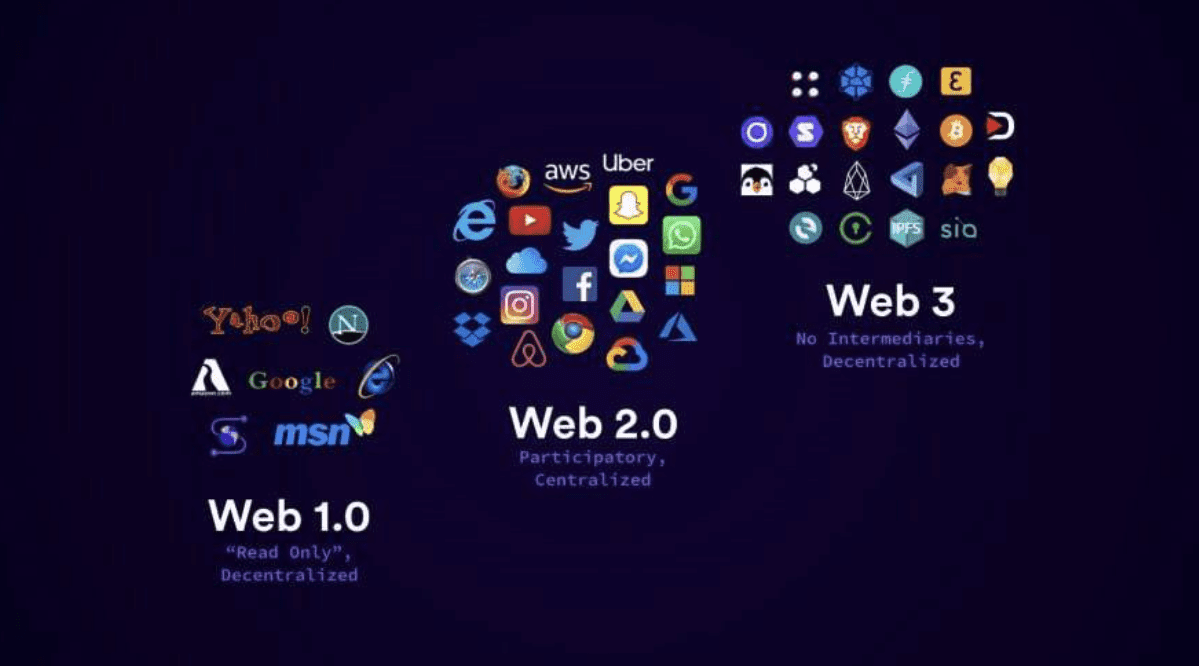If you have been in the world of blockchain for a longer period of time, you have probably come across the terms Web 2.0 and Web 3.0. In order to understand exactly what Web 2.0 and Web 3.0 are and how they are related to blockchain, you must consider some other factors. In today’s article, we are not only going to answer those questions, but many others related to this topic.
First things first, the internet has gone through various milestones and different stages to reach this level. Now, Web 2.0 as well as Web 3.0 are just generations of services with dozens of variations in how people interact with the internet. Therefore, lots of people want to find out what the differences are between these two.
Evolution Of The Internet
Before we dive deeper into details and differences between Web 2.0 and Web 3.0, we should take a look at how the internet got to the level it is today. Initially, there was only Web 1.0 and it contained static web pages. They served content from the family system of servers and the first phase of the internet allowed users from all over the world to access the data.
However, the biggest disadvantage of Web 1.0 back then was that it didn’t offer any ways to interact with the content. In other words, it was only offered tools for uploading static information, without allowing the users to change or add to anything on these web pages.
After a certain period of time, Web 2.0 started gaining more and more prominence as it allowed the users to actually interact with the content. Still, Web 2.0 had a certain amount of setbacks, which led to development of Web 3.0.

What Is Web 2.0?
Web 2.0 refers to the second stage of services on the internet and it was primarily focused on allowing the users to interact with the content. Not only did this stage of the internet increase the growth of user-made content, but it also increased usability and interoperability for end users. These are some of the most notable features of Web 2.0:
- Web 2.0 allowed people to access the content on the internet via almost any device that is internet-connected. This includes not only mobile phones and PCs, but also televisions and multimedia consoles as well.
- The second stage of the internet ensured dynamic content, offering high responsiveness to all the users.
- Not to forget that it also allowed the users to classify and retrieve information.
What Is Web 3.0?
Even though the second generation of the internet might seem to have quite an advanced approach, it still comes with a lot of downsides. However, Web 3.0 offers promising improvements over the previous generation. In other words, the third generation of the internet comes with significant transformations of infrastructure.
It uses AI (artificial intelligence) to power machine-to-machine interactions. As it uses a decentralized network to pass the data to owners, users get exerting ownership of the data and are allowed to choose the ways in which it will be shared. The third stage of the internet also focuses on ensuring maximum security and privacy for the users. These are some of the most important highlights that make Web 3.0 different from Web 2.0:
- Web 3.0 significantly improves the overall privacy and security for the users.
- This stage of the internet also allows the users to use the potential of graphics and 3D visuals.
- Another crucial advantage of Web 3.0 is the Semantic Web functionality. This means that it supports understanding the words and their meaning. This way, both humans and machines can easily analyze, share, and find information in the Web 3.0.
- As it uses artificial intelligence, Web 3.0 offers results at a much faster pace and access real-time insights.

Differences Between Web 2.0 And Web 3.0
Now that you know what Web 2.0 and Web 3.0 are, it is time to compare the two and take a look at how they are different in each way.
Definition: Web 2.0 is primarily focused on allowing users to interact with the content, while Web 3.0 is focused on semantic learning and decentralization.
Technologies utilized: While Web 2.0 uses technologies such as HTML5, JavaScript, CSS3, and AJAX, Web 3.0 utilizes machine learning, artificial intelligence, and decentralized protocols.
State of data: In Web 2.0, the network is the owner of the data, while in Web 3.0, entities own the data, its use and sharing.
Web 3.0 is coming
After considering the main highlights from this article, it is clear that Web 3.0 has many more advantages over Web 2.0. The third generation of the internet has quite a promising infrastructure that is crucial for the interaction between machines and humans. Not to forget that Web 3.0 offers much better security as well as privacy and thus, is considered to be way more trustworthy. If you are interested in how you can invest in Web 3.0, you can read our article here.
Marketplacefairness.org provides all its content for informational purposes only, and this should not be taken as financial advice to buy, trade or sell cryptocurrency or use any specific exchange. Please do not use this website as investment advice, financial advice or legal advice, and each individual's needs may vary from that of the author. This post includes affiliate links with our partners who may compensate us.
To view our privacy policy read it here.

